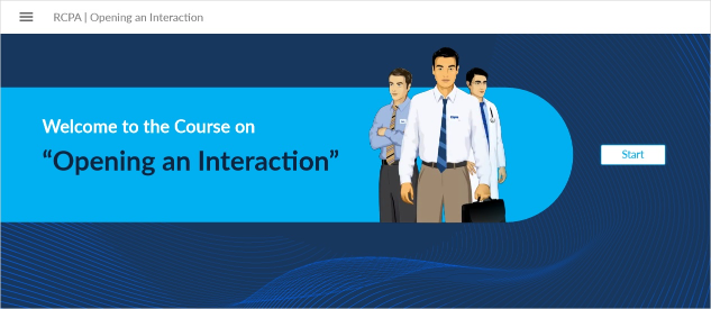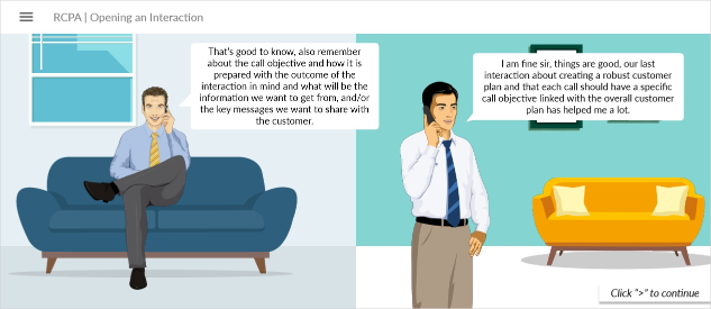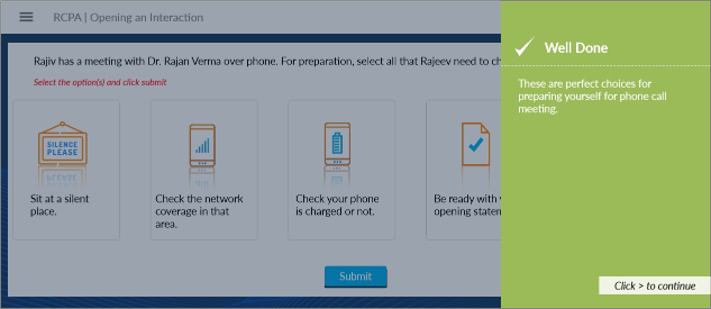Custom eLearning Solution
Instructional design services
A more strategic approach to training and instructional design allows us to create holistic learning opportunities based on the best content and delivery.
What makes instructional design different?


Smart, beautiful instructional design
Our instructional design team is led by designers who understand learners on a deeper level than most. Our neurolearning-first approach means we’re always thinking about the best way to engage learners’ brains and convert knowledge into long-term memory. This usually means deep discovery with each organization we work with—getting to know past learning gaps, content, and what eventual success really looks like. As we take the time to meticulously learn and plan, we’re better able to create learning experiences that are specifically designed and delivered with those goals in mind. Our instructional design is an intelligent and intentional approach that brings better results.
Data-driven instructional design

Related solutions
Contact with our experts
Case Studies
Launching eLearning Modules for a Leading Event Management Company
A leading event management company in the U.S. aimed to transform their top-selling Amazon books into comprehensive eLearning modules. However, several challenges arose:
Understanding eLearning Dynamics::
The client needed guidance on the principles of eLearning, including design and development strategies.
Scope Creep:
Frequent changes in project scope complicated the content development process, leading to uncertainty and potential delays.
Understanding eLearning Dynamics::
The client needed guidance on the principles of eLearning, including design and development strategies.
Scope Creep:
Frequent changes in project scope complicated the content development process, leading to uncertainty and potential delays.
To address these challenges, we proposed a structured approach to develop 30+ hours of eLearning content aligned with the client’s curriculum. Key components of our solution included:
eLearning Content Development:
We designed engaging modules tailored to various complexity levels, specifically levels 2 and 3, ensuring that learners could grasp essential concepts effectively.
LMS and Mobile App Integration:
We identified a suitable Learning Management System (LMS) to implement the eLearning strategy and developed a mobile app to facilitate easy access for users.
Salesforce Integration:
The mobile app was integrated with Salesforce, allowing the client to generate and track leads efficiently, linking eLearning success with business growth.
eLearning Content Development:
We designed engaging modules tailored to various complexity levels, specifically levels 2 and 3, ensuring that learners could grasp essential concepts effectively.
LMS and Mobile App Integration:
We identified a suitable Learning Management System (LMS) to implement the eLearning strategy and developed a mobile app to facilitate easy access for users.
Salesforce Integration:
The mobile app was integrated with Salesforce, allowing the client to generate and track leads efficiently, linking eLearning success with business growth.
The implemented solution provided multiple advantages for the client:
Streamlined Learning Process:
The structured eLearning modules offered a flexible and engaging learning experience for users, promoting knowledge retention.
Enhanced Business Opportunities:
The integration with Salesforce enabled effective lead generation and tracking, directly contributing to the client’s sales efforts.
Scalability:
With a robust LMS and mobile app in place, the client can easily expand their eLearning offerings in the future, reaching a wider audience and increasing revenue streams.
This strategic partnership positioned the client to successfully launch their eLearning business while maintaining a clear focus on growth and scalability, turning their literary assets into valuable educational tools.
Streamlined Learning Process:
The structured eLearning modules offered a flexible and engaging learning experience for users, promoting knowledge retention.
Enhanced Business Opportunities:
The integration with Salesforce enabled effective lead generation and tracking, directly contributing to the client’s sales efforts.
Scalability:
With a robust LMS and mobile app in place, the client can easily expand their eLearning offerings in the future, reaching a wider audience and increasing revenue streams.
This strategic partnership positioned the client to successfully launch their eLearning business while maintaining a clear focus on growth and scalability, turning their literary assets into valuable educational tools.



Frequently Asked Questions
1Is instructional design optional when creating online learning solutions?
The short answer is “No.”
The instructional design process brings important benefits to corporate training. An instructional designer knows many ways of promoting knowledge, skill, or behavior acquisition. Moreover, they know how to choose the best way—strategies, methods, and technologies—for each project.
Instructional designers rely on instructional design models to create engaging and effective training solutions. The learning content, activities, assessments, and overall learning experiences that they design also increase knowledge retention and recall.
Oh! At the same time, an instructional designer keeps client needs and learner profiles top of mind.
2Is the visual aspect of learning content the main concern of instructional design?
Big “No.”
Our instructional designers take the original learning material to pieces and dive into its details. Then, they identify key information that your employees must learn. Finally, they gather all the pieces they reworked or created from scratch and put them together.
The look and feel of learning material is a subsequent concern that sits on top of a good information foundation. And that’s an instructional developer’s concern.
An instructional developer is a professional who actually builds the course using authoring software. They work on the aesthetics and interactivity of the course designed by the instructional designer.
Instructional developers combine content with multimedia elements to deliver effective learning experiences. And the effectiveness of these experiences depends not only but also on visually appealing and intuitive user interfaces.
3Does instructional design take too long?
Not necessarily.
Well, first of all, it depends on the size and complexity of your project. Then, there’s an agile take to instructional design that’s growing in the training industry.
Recently, instructional designers are using iterative and faster approaches to their processes. They design in (short) sprints and implement prototypes that stakeholders evaluate. This early validation is what speeds up the process and sets agile models apart from more traditional ones.
